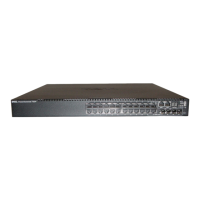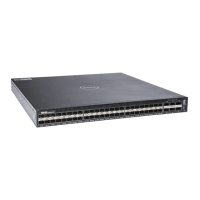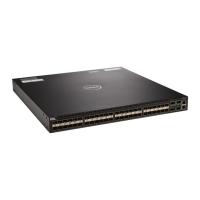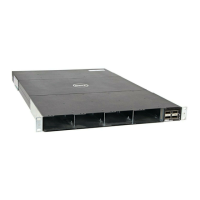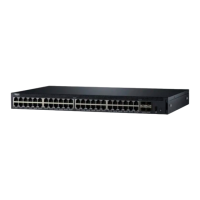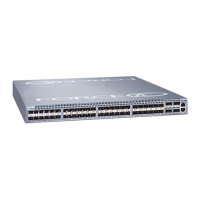946 Configuring Link Aggregation
2
On the MLAG standby switch, shut down the MLAG peer-link.
3
Copy the new firmware to the standby switch, activate it, and reboot the
switch.
4
Re-enable the peer-link, if disabled, and ensure that it is up. Re-enable the
MLAG-associated physical ports.
5
Wait until traffic is re-established on the standby switch.
Repeat the upgrade procedure on the MLAG primary peer:
1
On MLAG primary switch, shut down the MLAG enabled physical links.
2
On MLAG primary switch, shut down the MLAG peer-link.
3
Copy the new firmware to the primary switch, activate it, and reboot the
switch.
4
Re-enable the peer link, if disabled, and ensure that it is up. Re-enable the
MLAG-associated physical ports.
5
Verify that traffic is re-established on the primary switch after the
reconvergence.
At this point, the switch firmware is upgraded and the MLAG is fully
functional.
Static Routing on MLAG Interfaces
MLAG interfaces can be enabled as L3 VLANs; that is, they can be assigned
IP addresses. Static inter-VLAN routing is NOT supported on MLAG VLANs
on the MLAG peers, and every MLAG VLAN must terminate on two MLAG
partners. There is no support for routing protocols such as OSPF, RIP, etc. on
MLAG interfaces. VRRP can be configured on these routing interfaces to
provide Virtual IP/Virtual MAC redundancy. Routing is supported only on the
edge of the MLAG towards the partner network, in support of implementing
a subnet per VLAN towards which the partner network can route. The interior
MLAG VLANs, and especially the MLAG peer links, must be configured for
switching and must span the MLAG topology.
MLAGs and Routing
MLAG is supported as a replacement for spanning tree in L2 switched
network topologies. When connecting to routed networks, the links/VLANs
on the router must be part of the MLAG domain, and the links/VLANs
leading to the rest of the L2 network or to L3 hosts must be part of the
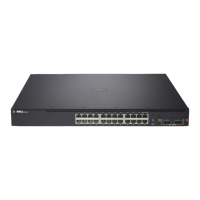
